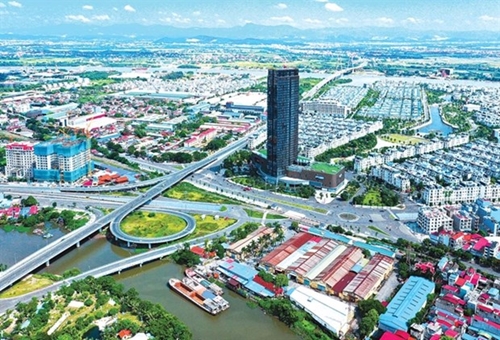In the first half of 2023, Hai Phong's gross regional domestic product (GRDP) grew by 9.9% year-on-year, 6.2 percentage points higher than the national average. It ranked third nationally and first in the Red River Delta. By 2025, Hai Phong is set to have a 6.4% share of the national GDP, increasing from 3.9% in 2022.
During the first six months, the Northern coastal city attracted USD 1.98 billion in foreign direct investment (FDI), increasing by 80% year-on-year. Rising FDI and investment projects in Hai Phong are likely to generate demand for affordable housing developments that cater to workers and professionals.
    |
 |
|
Hai Phong's housing demand will continue to increase, greatly influenced by industrial park development with labor force recovery, FDI growth, and infrastructure improvements. |
Meanwhile, Hai Phong ranked third in the Provincial Competitiveness Index (PCI) 2022 with a score of 70.7, only behind Quang Ninh and Bac Giang provinces. Its continuously high PCI score reflects its favorable business environment and potential for future investment.
Besides that, Hai Phong actively invests in infrastructure, which spurs provincial competitiveness and economic growth. Ongoing and planned projects comprise expressways, ring roads, ports, and bridges.
Total public investment in 2023 is estimated to exceed VND 22 trillion (USD 929 million). In the first half of the year, Hai Phong disbursed VND 8 trillion (USD 338 million).
This coupled with its strategic positioning in the Northern economic triangle (Hanoi - Hai Phong – Quang Ninh) and abundant resources, means the city has significant potential for further development.
Hai Phong's industrial market comprises 2,634 ha of net leasable area (NLA) across 12 industrial parks. A further 2,473 ha is expected from seven projects between 2023 and 2025. Industrial development will spur residential and commercial demand given the growing workforce, expat communities, and increasing wealth levels.
This port city is home to Dinh Vu - Cat Hai economic zone. It offers investment incentives like import and export tax exemptions for goods and corporate income tax exemptions and reductions for as long as 15 years. Foreign and local investment will have a ripple effect, which will create interesting business opportunities in Hai Phong for developers, investors and service providers.
Housing demand will continue to increase, greatly influenced by industrial park development with labour force recovery, FDI growth, and infrastructure improvements. As the city expands, commercial and hospitality demand will also grow, said Do Thu Hang, senior director, Advisory Services, Savills Hanoi.
“There is room for investors and developers to capitalise on real estate in Hai Phong. Sectors are diverse and speak to players from logistics and port development to residential developers looking to explore emerging segments like worker housing,” Hang said.
Apartment stock reached 11,969 units from 11 projects, increasing by 5% year-on-year, 1 percentage point higher than in Hanoi. Le Chan district had the largest share at 46 %. The average primary asking price was VND 45 million, 15% lower than in Hanoi. Meanwhile, since 2019, primary prices have increased by 8% each year.
From the second half of 2023 onward, 25,100 units are scheduled. Thuy Nguyen district will have a 56% share of future supply, unsurprising considering its large land banks and IPs, including Nam Cau Kien and VSIP Hai Phong.
Thuy Nguyen will become a city by 2025, like Thu Duc city in Ho Chi Minh City. As the new administration and political center of Hai Phong, it will have significant residential demand, which mega projects like Vinhomes Vu Yen Island.
Given Hai Phong's active industrial segment, it has an established serviced apartment market. Sunflower International Village (developed by LG International) was the first project and opened in 1998. Stock of 1,500 units was second only to Hanoi in the North. Ngo Quyen district had a 66% share of stock. Occupancy remained high at 70%, and rent reached VND 532,000 per sq.m per month, improving by 7% year-on-year.
From the second half of the year, 113 units will enter from two projects. Both are international brands. As the city continues to receive good FDI inflows, it will have more expats, driving demand for serviced apartments.
Office stock of 173,000 sq.m NLA from Grade B and C offices increased by 4% year-on-year; growth averaged 2% per annum from 2019 to the first half of 2023. Occupancy is high at 91%, but rent is competitive at VND 238,000 per sq.m per month.
Hai Phong's growing economy and rising foreign direct investment mean there are upscale projects in the pipeline like May Legend. Increasing FDI enterprises and demand for office space in the city center highlight Hai Phong's emerging commercial potential, Hang said.
Source: VNA